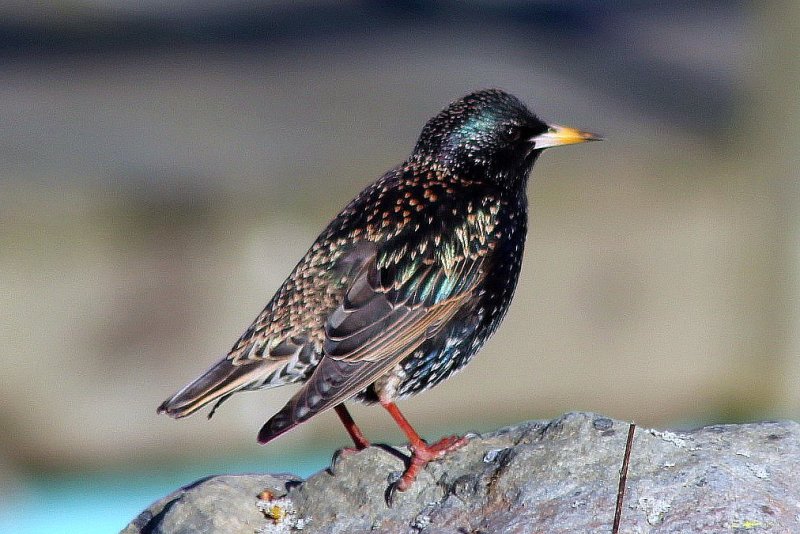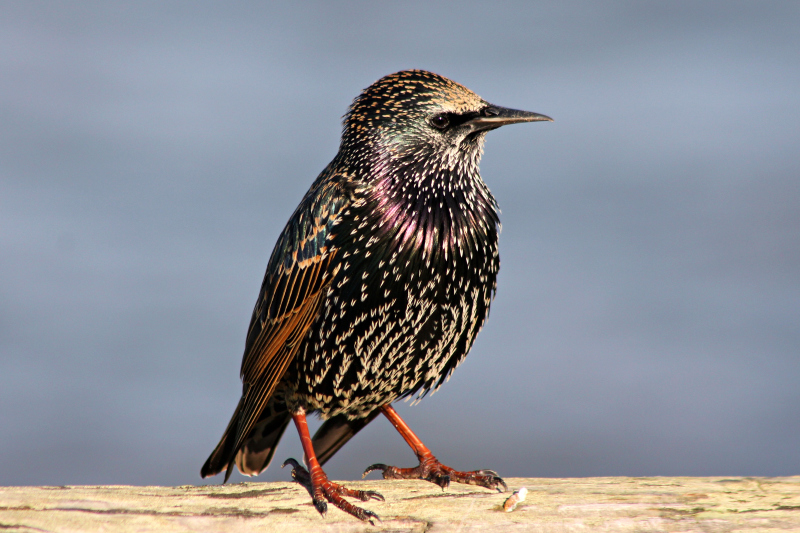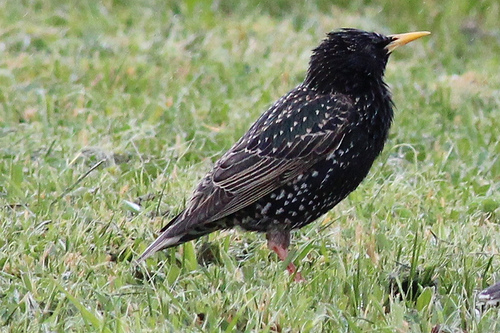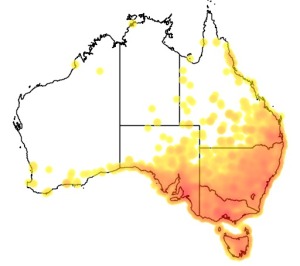
©David A. Hofmann: Common Starling (Sturnus (Sturnus) vulgaris), Bodega Bay, Sonoma County, California

©David A. Hofmann: Common Starling (Sturnus (Sturnus) vulgaris), Bodega Head State Park, Sonoma County, California
Colours
Distinguishing features
The plumage is shiny black, glossed purple or green, and spangled with white, especially in winter. The underparts of adult males are less spotted than those of adult females at a given time of year. The throat feathers of males are long and loose and are used in display while those of females are smaller and more pointed. The legs are stout and pinkish- or greyish-red. The bill is narrow and conical with a sharp tip; in the winter it is brownish-black but in summer, females have lemon yellow beaks while males have yellow bills with blue-grey bases. (Wikipedia)
Size
- From 19 cm to 23 cm (Length of specimen)
Wingspan
- From 31 cm to 44 cm
Synonyms
Distribution
Distribution and habitat preferences
They prefer urban or suburban areas where artificial structures and trees provide adequate nesting and roosting sites. Reedbeds are also favoured for roosting and the birds commonly feed in grassy areas such as farmland, grazing pastures, playing fields, golf courses and airfields where short grass makes foraging easy. They occasionally inhabit open forests and woodlands and are sometimes found in shrubby areas such as Australian heathland. Common Starlings rarely inhabit dense, wet forests (i.e. rainforests or wet sclerophyll forests) but are found in coastal areas, where they nest and roost on cliffs and forage amongst seaweed. Their ability to adapt to a large variety of habitats has allowed them to disperse and establish themselves in diverse locations around the world resulting in a habitat range from coastal wetlands to alpine forests. (Wikipedia)
Local abundance
- Cape Kidnappers, New Zealand: abundant
Diet
It is largely insectivorous and feeds on both pest and other arthropods. The food range includes spiders, crane flies, moths, mayflies, dragonflies, damsel flies, grasshoppers, earwigs, lacewings, caddisflies, flies, beetles, sawflies, bees, wasps and ants. Both adults and larvae are consumed and they will also feed on earthworms, snails and small vertebrates such as frogs and lizards.
While the consumption of invertebrates is necessary for successful breeding, Starlings are omnivorous and can also eat grains, seeds, fruits, nectars, and garbage, if the opportunity arises. (Wikipedia)

